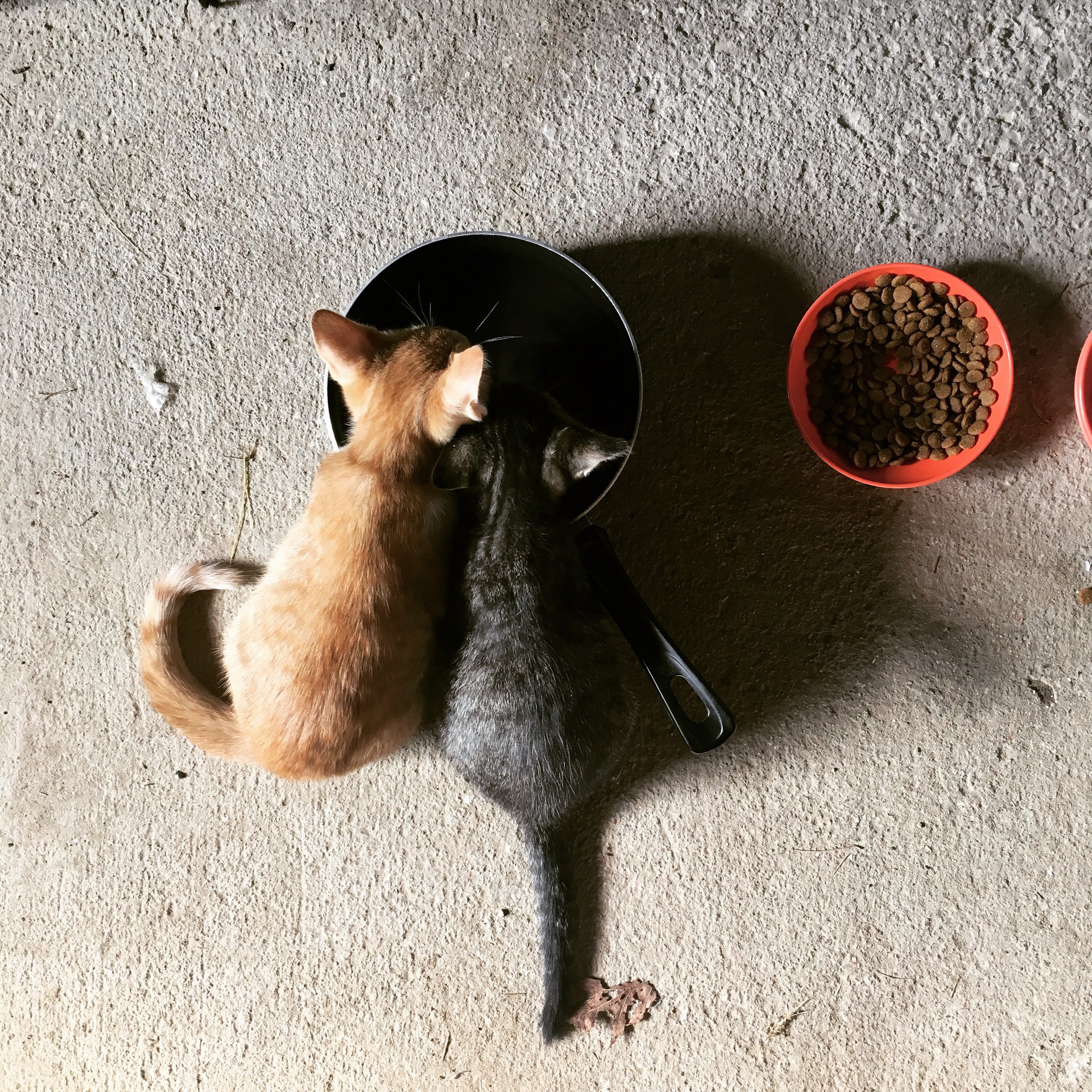Interestingly enough, I posted Why You Can’t Write about Fleas and a few days later Curtis (he’s very wonderful) and I acquired a flea-ridden kitten. I was wrong. You can, under extenuating circumstances, write about fleas.
Curtis first noticed the unwelcome parasites in the car after picking up the kitty. He saw a small black dot moving through the white fur. By the time we got home, he’d seen quite a few more of them. Prepared to wage all-out war on the fleas, we found a basin, squeezed about an entire bottle of Dawn dish soap into it, and filled it with warm water.
De-fleaing a cat is a fascinating (and disgusting) process. Crying and yowling, the orange and white kitten fiercely resisted the suds. But after several moments, she resigned herself to a watery fate, and crouched in misery in the tub, almost as if she knew we were helping her in the long run. Dawn miraculously kills fleas on contact—so as soon as we submerged her into the water, there were dozens of dead fleas floating around.
What we naively assumed would be a fifteen minute process turned into a three-hour escapade. Filling basin after basin with fresh warm, water, we combed hundreds fleas out of kitty’s coat until around 11 p.m. Still a few stuck in her fur, but we determined that enough was enough.
After pulling her out, we blowdried her, named her Brave (because really, what’s more brave than a parasite covered cat taking a three hour bath?) and put her in a turkey roasting pan* with a blanket in it. (she’s fully recovered now)
If you can avoid it, don’t get a kitty with fleas. It’s only barely worth having the experience to write about.
Left to right: Brave, Scout.
*Curtis and I recently made a purchase that included two turkey roasting pans.

